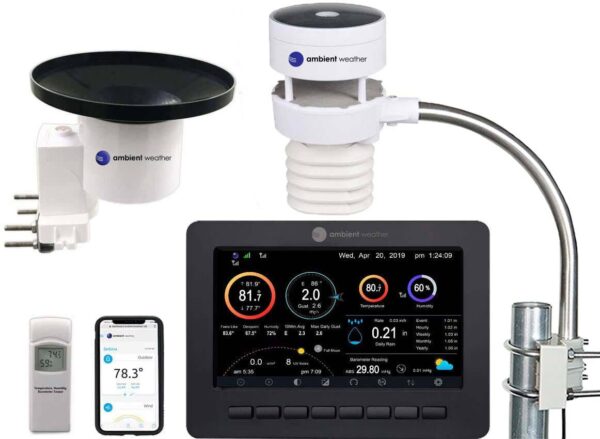When it comes to monitoring the weather, data accuracy can vary greatly between brands and devices. Kestrel is synonymous with accuracy and durability, and one of its secrets lies within its calibration.
In comparison to other professional weather stations, Kestrel is intuitive for setting up and even easier to calibrate. This is how Kestrel offers impressive accuracy over its competitors, whether you’re a professional meteorologist or backyard weather enthusiast.

Unmatched Accuracy Right Out of the Box
Kestrel meters are renowned for their precision and robustness, ready to deliver accurate readings as soon as they’re unpacked. This level of reliability is necessary, especially for operating in extreme environments for extended periods.
In combination to its own cellular network, it’s no wonder why so many count on Kestrel for around-the-clock accuracy. With Kestrel, you’re always connected to the world around you!
Calibration: The Key to Consistent Accuracy
While Kestrel meters are designed to last, maintaining their accuracy involves understanding their calibration needs. Here’s a breakdown of how Kestrel ensures ongoing accuracy:
- Wind Speed: Kestrel recommends replacing the impeller every 2-3 years, depending on usage. This regular maintenance ensures wind speed measurements remain precise over time.
- Temperature: The thermistor is built to last the unit’s lifetime without needing recalibration. This durability is essential for reliable temperature readings.
- Pressure: Similar to the temperature sensor, the pressure sensor in the Kestrel 5 series doesn’t require recalibration throughout the unit’s life.
- Humidity: Data loggers feature a highly accurate digital humidity sensor. Given its minimal drift over time, field recalibration is generally not necessary and could potentially reduce accuracy.
Meanwhile, Kestrel offers factory calibration to validate and certify accuracy at multiple RH points, providing an extra layer of confidence in the readings.
Why Kestrel Accuracy Stands Out
While other weather stations may require frequent recalibration or show significant drift over time, Kestrel’s design philosophy promises longevity and reliability. This approach to calibration – particularly the emphasis on minimal need for user intervention – sets this weather station apart from models such as Ambient Weather WS-5000, and Davis Instruments Vantage Pro2.
Getting the Most Out of Kestrel: Practical Tips for Optimal Accuracy
With Kestrel’s calibration and advanced sensors, there are ways that you can get an even better weather tracking experience. Try these practical tips to ensure the best accuracy in measurements:
- For Temperature: Keep the air moving around the sensor and avoid direct sunlight.
- For Humidity: Avoid proximity to moisture sources and ensure the sensor isn’t covered.
- For Wind Measurements: Ensure the unit is oriented correctly into the wind and mounted at an appropriate height.
- For Compass Readings: Keep the unit as vertical as possible for accurate direction readings.
When comparing Kestrel to other weather stations, it’s calibration and sensors are built for long-term accuracy and minimal recalibration needs. This is why Kestrel a superior choice for professionals and enthusiasts alike who enjoy reliable and consistent weather data. Consider KestrelMet 6000 for the ideal weather monitoring experience!

